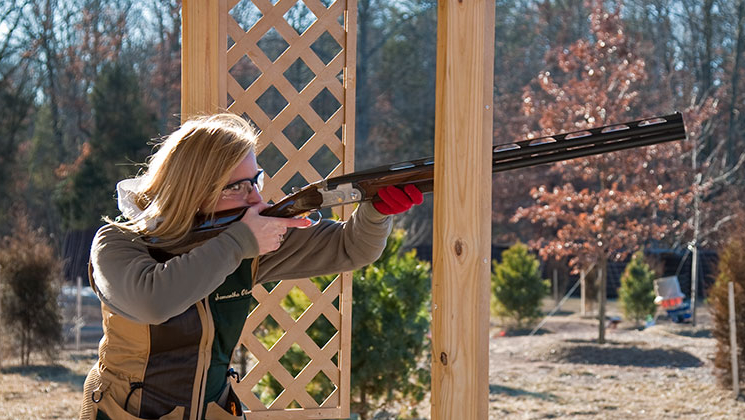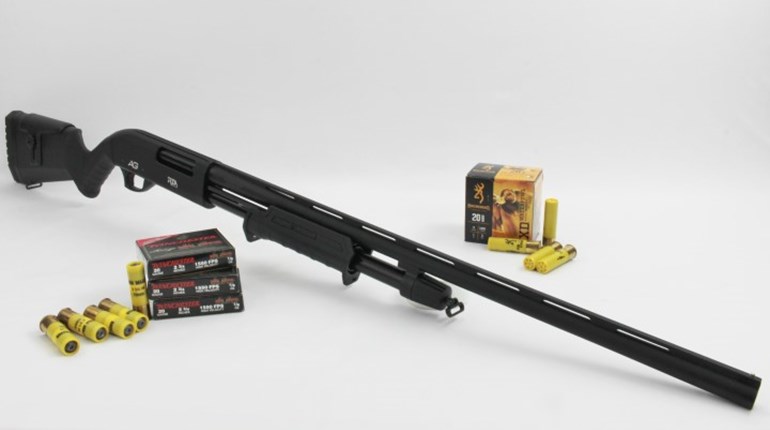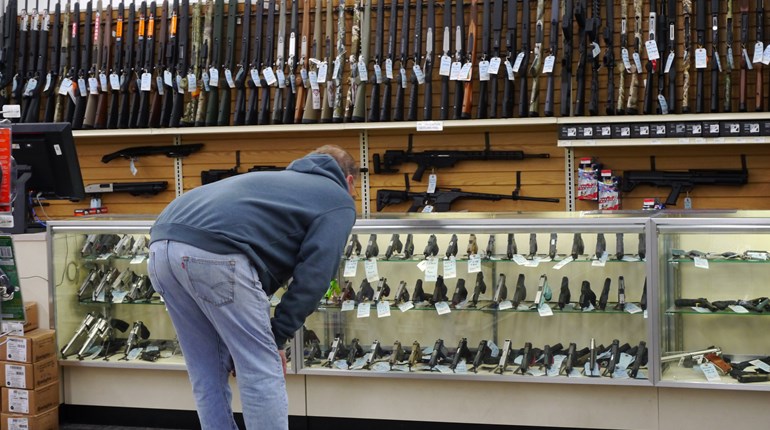
As a shooter and an instructor, nothing pains me more than watching someone get thrown around by his shotgun. Except, perhaps, being beaten up by my own shotgun.
Why? First, it doesn't have to happen. Second, it'll have a negative effect on the shooter's learning and performance. Third, that just might cause him to walk away from the sport altogether.
The most common reason for this abuse is a poorly fitting shotgun, especially among shooters who are smaller in stature. And by that, I mean pretty much anyone who doesn't fit the standard or average measurement of a male shooter: approximately 5'10”, 185 pounds. It's not their fault, and it's not our fault. Manufacturers have to have somesort of standard to work to-and fortunately for us smaller folk, several are addressing our problem and are creating scaled-down versions of their various firearms.
Still, there are plenty of shotguns in circulation that are of the “regulation grown-up man” size, and thus are not suitable for those under the 5'10”, 185-lb criteria. (Note: It is always easier to shoot a long gun-rifle or shotgun-that is too short. But it is extremely difficult, and sometimes painful, to shoot one that's too long.)
Bear in mind that the two general categories of shotgunning-wingshooting (clays and hunting), and defensive shooting-involve very different techniques, including stance and upper body positioning. Also know that shotgun fitting is a true art-and-science, and professional fitters spend years learning and perfecting their craft, especially for wingshooting. If you're going to focus on one in particular, it's best to find a professional fitter who understands your discipline well, and thus also knows the specific positioning of the different body parts on the shotgun.
The dimensions of the shotgun are numerous, and all matter in its fit. Each also tends to affect at least one of the others-so you can begin to see why shotgun fitting requires such study!
The basic fit dimensions for your shotgun are:
1) Length of pull-the distance between center of buttpad and trigger face.
2) Pitch-the angle of the buttstock versus that of the barrel's.
3) Drop-the distance between the line of the barrel (or rib) to the various points on the stock (comb, heel, etc.).
4) Cast-the angle or bend of the stock (right or left) of the rib or barrels.
5) Barrel length-though not ordinarily included in gun fit dimensions, barrel length is an extremely important element for smaller-statured shooters. It affects balance, ability to swing the shotgun, and in many cases, sighting the firearm. It's often neglected, especially as it's more difficult to shorten a barrel than a stock, but it affects the shooter's ability to manipulate the shotgun more than most people know.
Despite the complexities and variables of shotgun fitting, there are a several elements that can guide us to a generally proper shotgun fit:
Length: The shotgun stock should fit such that the butt pad can be placed in the “pocket” of the shoulder-the high pectoral muscle well inside the shoulder joint. The chest and shoulders should be square, that is, perpendicular to the shotgun. The firing side shoulder can roll forward, locking the buttstock into place. If this can't be done, and/or the buttstock slides toward the point of the shoulder, the stock is much too long.
Hands: When in place, this stock placement should allow the shooter to place his or her entire shooting hand comfortably on the wrist/pistol grip of the shotgun, with a firm “handshake” strength hold. This should also put the index finger on the face of the trigger somewhere between the middle of the trigger finger's first pad and the crease of the first joint. Note that if this finger position is not achievable, even though the buttstock is properly in the shoulder pocket, it could be that the wrist of the shotgun is too big-that is, the circumference of the pistol grip may be too large.
Meanwhile, the supporting (non-shooting) hand should be able to reach the fore-end of the shotgun with a healthy bend in the arm. The straighter the arm, the weaker it will be, and since the support arm will be holding most of the weight of the shotgun, it's important that it be as strong as possible.
When the shotgun fits, both hands should work together smoothly, without one doing more or most of the work. This results in a smooth, consistent mount, which in turn is necessary for proper movement and aiming.
Face/Head: When the shotgun is properly mounted to the body, the head should be in a relatively neutral position, without much of a bend in the neck. Pushing the face forward to lock onto the shotgun is recommended, but bending at the neck, such that the plane of the face tilts downward, is not. This causes strain on the eye muscles and compromises sighting abilities, and also makes for inconsistent mounts. The nose should be two or so inches inches or so from the back of the hand, and for most people, this will mean that the cheek is slightly forward of the middle of the stock's comb (measured from the heel to the place where the comb drops and the pistol grip begins).
Cheek: A properly fitting gun should provide for a very firm “cheek weld,” which is placement of the cheek on the comb. The comb should ride just underneath the cheekbone, which in turn should be wedged onto the comb. This placement should be positive enough so that the cheek “pooches” over the comb. If this cheek weld doesn't allow a sight picture, then the comb is too low.
These are very general guidelines you can use to judge whether your shotgun suits you, but a more comprehensive fitting is highly recommend if you get serious about shotgunning. Besides what's on the shotgun, your own neck and arm length, cheek width and height, shoulder thickness, and a host of other measurements can affect how your shotgun fits you-and thus, how you shoot it.
A properly fitting shotgun is comfortable and natural to shoot, and well worth the investment!







































